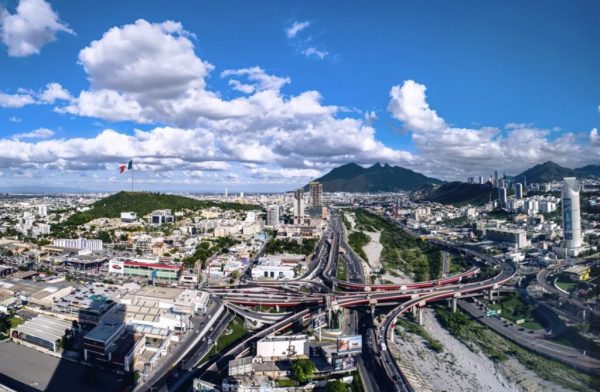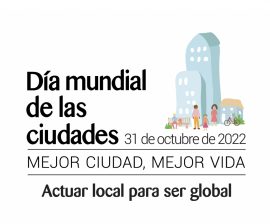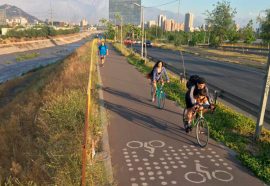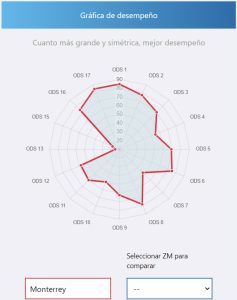
UNIVERSIDAD AUTÓNOMA DE NUEVO LEÓN
SECRETARÍA DE SUSTENTABILIDAD
Urban October

In search of a better quality of life, every year many people decide to go live in cities, because for them, urban places represent greater advantages such as: suffering fewer health care problems, raising their level of economic income, as well as having access to education and the use of various services and technologies; However, not everything is positive because once installed in the urban dynamic they are exposed to various risks, such as being victims of crime and violence, suffering from diseases associated with pollution, mobility problems, poverty, natural disasters, waste, among others. others.
Currently, 48% of the world's population lives in cities, which are characterized by being densely populated areas, unlike rural areas that have a sparse population (Organization for Economic Cooperation and Development, 2020), in such a way that It becomes increasingly urgent to establish means of dialogue as well as put into action strategies and practices that allow overcoming the environmental and social challenges that urban communities face in order to provide the opportunity to have better living conditions.

Sustainability comes to proposing paths to contribute to more environmentally friendly urban development, based on social justice and according to the characteristics of each region from a global vision, in such a way that, through the Sustainable Development Goals promoted by the United Nations, specifically goal 11 “Sustainable Cities and Communities”, aims to contribute to the development of cities that are more inclusive, safe, resilient and sustainable. Have you ever imagined what your house, building, street, neighborhood or municipality will be like in the future?... surely yes, in which the image created is expected to include aspects of sustainability, if not, it is important to rethink that future with the so that sustainability is an important part of it.
To have an idea of what a sustainable city is, some characteristics proposed by the National Population Council (2015) are presented and which allow us to consider them to incorporate them into life and, if possible, put them into practice:
- Poverty reduction.
- Decrease in inequality
- Make rational use of natural capital
- Promote low carbon economic growth
- Generate jobs and opportunities for all
Have quality public services, control of land use, public finances and urban regulations.


Since 2014, the United Nations has established October 31 as World Cities Day, which aims to promote interest in urbanization and encourage cooperation between countries to take advantage of the opportunities and address the challenges posed by urbanism. , as well as to contribute to sustainable urban development around the world.
In 2022, the theme “Act local to be global” is addressed with the aim of contributing to the construction of greener, more equitable and sustainable cities. This is done so that cities from different parts of the world share their contributions to the United Nations Sustainable Development Goals (SDGs).
In Mexico, through the National Public Policy Laboratory, the specific results were presented, by SDG and by indicator, for each of the metropolitan areas that exist in the country.
In the case of the city of Monterrey and its metropolitan area in 2021, it obtained a general index of 61.2.

Having a favorable performance in SDGs 1 (end of poverty) and 17 (partnerships to achieve the objectives), while in objective 13 (climate action) the lowest performance was recorded.
Because cities are the places where the largest population in the world currently lives, it is therefore urgent to promote sustainable urban development, which allows achieving the goals set by each of the SDGs, but above all, raising the quality of life of the people who live there.
References:
Carlos Garrocho • Adrián G. Aguilar • Carlos Brambila • Boris Graizbord • Jaime Sobrino. (2014). Hacia una cultura de las ciudades sostenibles. http://www.conapo.gob.mx/work/models/CONAPO/Resource/2516/1/images/ciudadessostenibles.pdf
Delfín, C. A., Gallina, S. A. y López, C. A. (2014). El hábitat: definición, dimensiones y escalas de evaluación para la fauna silvestre. http://www2.inecc.gob.mx/publicaciones2/libros/717/cap13.pdf
Jardel, E. J. (2015). Guía para la caracterización y clasificación de hábitats forestales. Programa de las Naciones Unidas para el Desarrollo. http://www.conafor.gob.mx:8080/documentos/docs/49/6661Gu%C3%ADa%20para%20la%20caracterizaci%C3%B3n%20y%20clasificaci%C3%B3n%20de%20h%C3%A1bitats%20forestales.pdf
Laboratorio Nacional de Políticas Públicas. (2021). Índice de Ciudades Sostenibles. https://ics.lnpp.mx/#resultados
Naciones Unidas. (2022). Día Mundial de las Ciudades 31 de octubre https://www.un.org/es/observances/cities-day
Naciones Unidas. (2022). Día Mundial del Hábitat 3 de octubre. https://www.un.org/es/observances/habitat-day
Organización para la Cooperación y el Desarrollo Económicos. (2020). Puntos fundamentales Ciudades del mundo Una nueva perspectiva sobre la urbanización. https://www.oecd.org/cfe/Cities-in-the-world-Highlights-SPA.pdf
UN Habitat. (2022). World Cities Report 2022 Envisaging the Futre of Cities. https://unhabitat.org/sites/default/files/2022/06/wcr_2022.pdf